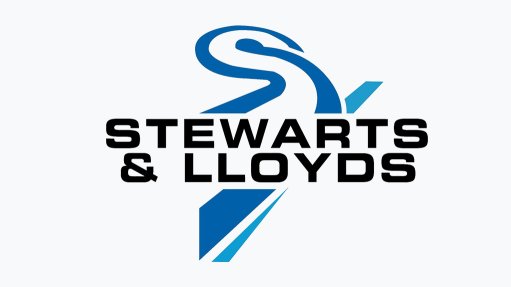Green hydrogen key to addressing renewables challenges


DWIBIN THOMAS GHS has the capability to store vast quantities of clean energy for long durations which can then be used during peak demand and for seasonal energy balancing
In South Africa, solar and wind are viable and established energy sources, notes digital automation and energy management company Schneider Electric cluster automation leader Dwibin Thomas. Unfortunately, it is limited to when the sun is shining, and the wind is blowing, which is why energy storage forms such an important part of the energy generation infrastructure.
In exploring the variability of solar in the US state of California, energy producers have observed a trend now referred to as the “Duck Curve”. In essence, the Duck Curve observes a drop in net load (or the demand remaining after subtracting variable renewable generation) in the middle of the day, when solar generation tends to be highest.
Therefore, when graphed for a typical day, the pattern created by the midday dip in the net load curve, followed by a steep rise in the evenings when solar generation drops off, looks like the outline of a duck in water, hence its name.
The question facing policymakers, engineers and businesses is how to store that clean energy in a way that can outsmart problems such as the Duck Curve.
South Africa is experiencing the same phenomenon, with Thomas noting that “our own duck curve is emerging”. He cites Stellenbosch University’s Centre for Renewable and Sustainable Energy Studies (CRSES), which notes that the introduction of PV into the electricity system (both on a utility scale and as embedded generation) will result in increased ramping being required from the rest of the system in the morning and evening.
“This can become a problem when the size of the required ramp starts to strain the ramping capabilities of the system,” CRSES says.
A Viable Answer
Schneider has, therefore, highlighted the significance of green hydrogen, both to catalysing the global effort to decarbonise energy systems and as a means of addressing the Duck Curve.
Thomas cites a recent report published by scientific, health and technical research journal ScienceDirect, which highlights two storage technologies: battery storage (BS) which is generally lithium-ion based, and green hydrogen storage (GHS). While green hydrogen is well known as an energy source, Schneider suggests that it might come as a surprise to some that it is also an extremely efficient storage solution.
GHS has the capability to store vast quantities of clean energy for long durations which can then be used during peak demand and for seasonal energy balancing. Once produced, green hydrogen can be used in stationary fuel cells for power generation or stored as a compressed gas, cryogenic liquid, or wide variety of loosely bonded hydride compounds for longer-term use.
Therefore, when the sun sets or the wind stops blowing, grid operators can turn to GHS to keep the lights on until the energy supply recovers in the morning.
Thomas notes that green hydrogen is produced using renewable sources such as wind, solar or even gas to electrolyse water, separating it into hydrogen and oxygen. The hydrogen produced can then be stored and used as a clean energy source.
This process is highly effective and, importantly, generates no carbon emissions, making it a crucial component in the global effort to decarbonise energy systems.
Already, this makes a compelling argument for green hydrogen, but “GHS takes the science to a new level”. Firstly, green hydrogen can be stored in smaller spaces compared to lithium-ion batteries. It is also more durable, and while the technology is currently more expensive, there is potential for cost reductions as the market matures.
GHS is also extremely scalable, allowing it to be used in various applications from industrial processes to powering vehicles, the company points out.
Thomas concludes that, in South Africa, green hydrogen and GHS’s properties can also contribute to economic growth and a stabilised grid, positively impacting on the country’s decarbonisation and energy security efforts.
Article Enquiry
Email Article
Save Article
Feedback
To advertise email advertising@creamermedia.co.za or click here
Comments
Press Office
Announcements
What's On
Subscribe to improve your user experience...
Option 1 (equivalent of R125 a month):
Receive a weekly copy of Creamer Media's Engineering News & Mining Weekly magazine
(print copy for those in South Africa and e-magazine for those outside of South Africa)
Receive daily email newsletters
Access to full search results
Access archive of magazine back copies
Access to Projects in Progress
Access to ONE Research Report of your choice in PDF format
Option 2 (equivalent of R375 a month):
All benefits from Option 1
PLUS
Access to Creamer Media's Research Channel Africa for ALL Research Reports, in PDF format, on various industrial and mining sectors
including Electricity; Water; Energy Transition; Hydrogen; Roads, Rail and Ports; Coal; Gold; Platinum; Battery Metals; etc.
Already a subscriber?
Forgotten your password?
Receive weekly copy of Creamer Media's Engineering News & Mining Weekly magazine (print copy for those in South Africa and e-magazine for those outside of South Africa)
➕
Recieve daily email newsletters
➕
Access to full search results
➕
Access archive of magazine back copies
➕
Access to Projects in Progress
➕
Access to ONE Research Report of your choice in PDF format
RESEARCH CHANNEL AFRICA
R4500 (equivalent of R375 a month)
SUBSCRIBEAll benefits from Option 1
➕
Access to Creamer Media's Research Channel Africa for ALL Research Reports on various industrial and mining sectors, in PDF format, including on:
Electricity
➕
Water
➕
Energy Transition
➕
Hydrogen
➕
Roads, Rail and Ports
➕
Coal
➕
Gold
➕
Platinum
➕
Battery Metals
➕
etc.
Receive all benefits from Option 1 or Option 2 delivered to numerous people at your company
➕
Multiple User names and Passwords for simultaneous log-ins
➕
Intranet integration access to all in your organisation















